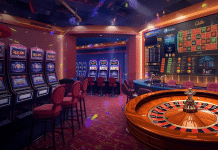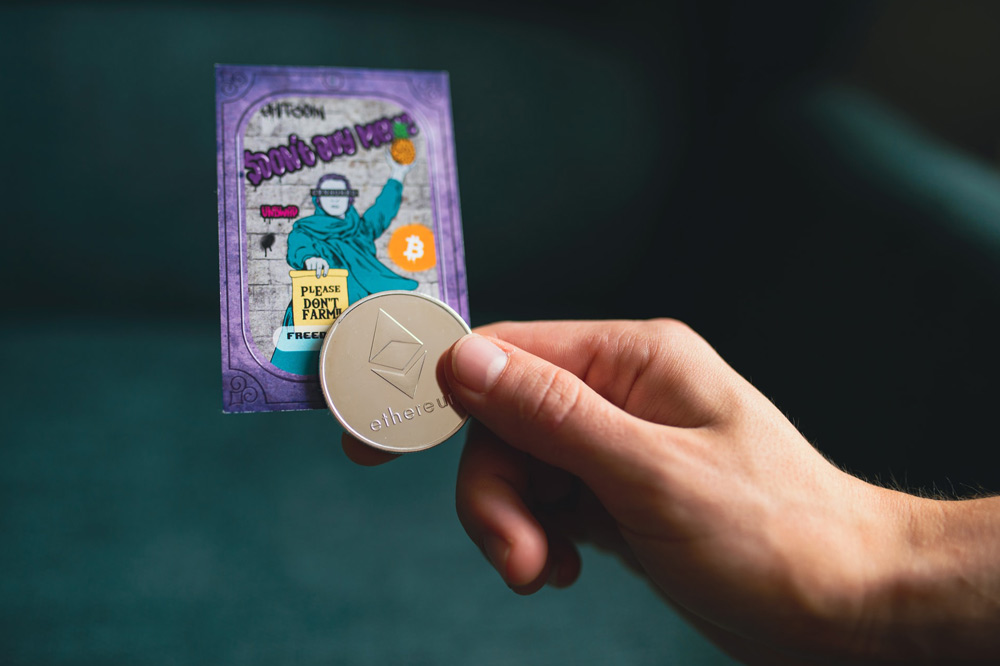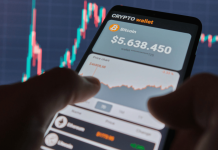NFTs are big news around the world.
Celebrities have entered the NFT industry. Talk show hosts and musicians have hosted NFT giveaways and launched NFT collections ranging from $50 to $1000. NFT artists have auctioned their artwork for millions of dollars. Even games are getting involved – some have begun rewarding players with NFT items.
This is not forgetting that many crypto-gambling sites have entered the metaverse.
If you’re interested in entering the market, there are many ways to buy NFTs, some being more expensive than others. So, is it possible to get a free NFT?
Here are tips to help you understand how to get your hands on free NFTs. We’ll also look at what makes them valuable and how much they can cost.
What Is An NFT?
Cryptocurrencies like ETH (Ether) and Bitcoin operate as fungible tokens. This means that each ETH is identical to another ETH. They have no differences, remain the same regardless of ownership, and follow the same price fluctuations.
Non-fungible tokens, on the other hand, operate differently. These ERC-721 tokens use smart contracts to execute ownership contracts included in the token. Each time someone mints a new NFT on a blockchain, it has a unique signature.
The signature usually includes ownership rights for one person, and each subsequent trade of that NFT records its new ownership. This is similar to copyrighted music and movies. The only difference is that the blockchain determines an NFT’s ownership, not a centralised authority.
Furthermore, some NFT projects mint identical tokens representing avatars, in-game items, pieces of artwork, or songs. They only mint a limited number of these tokens, thus making these collections rarer than fungible tokens. These limited collections operate on the same premise as trading cards like Magic: The Gathering or The Pokemon Trading Card Game.
Lastly, the metaverse also places great importance on NFTs for demarcating plots of land in metaverse worlds like Decentraland and SandBox. They also ensure that artists can launch their works in the metaverse without fear of losing out on profits due to piracy. Artists can include conditions in their NFTs that give them royalties each time their NFTs trade hands.

How Much Does An NFT Cost?
Many platforms offer free NFTs, but buyers can buy NFTs on a marketplace or leverage crypto tools to mint NFTs. Each method requires a small cost from the seller, buyer, or platform. For example, Ethereum charges a gas fee for processing transactions. The cost depends on the NFT’s size, minting time, and computational complexity.
Buying an NFT
Buying an NFT first requires having an ETH balance in your crypto wallet. Most wallets support NFTs, but users could create a MetaMask wallet to be safe. This browser extension conveniently allows NFT holders to trade their holdings on marketplaces. It is less secure than a desktop or hardware wallet but suitable for low-value NFTs.
Next, there are various NFT marketplaces. Two popular platforms, OpenSea and Rarible, allow users to buy NFTs with minimal gas fees.
Furthermore, on Rarible, users can purchase NFTs for a set price with their credit card or cryptocurrencies. The list price will show the cryptocurrency needed. There is also an auction function on the platform. Here users can use their cryptocurrency to bid on an NFT. It does not support credit cards.
Finally, a user can purchase NFTs from OpenSea. Once they connect their compatible wallet, they must navigate to the listed NFTs and click “Buy Now.” Each purchase requires paying a gas fee. This can range from $5 to over $100. Be sure to check the gas fee before confirming a purchase.
Minting an NFT
Minting on Ethereum requires about 150 bytes of RAM. 0.1 ETH usually covers this as it gives the user around 200 bytes. This comes to a cost of $267,04.
That is quite a hefty price, so make sure to budget on the gas fees before minting an NFT. The rules of supply and demand determine an NFT’s value. This means it might be worth less while it is on sale.
Five Ways To Get Free NFTs

There are five methods by that new projects and companies attempt to attract new customers and take advantage of the NFT bubble.
The first is play-to-earn games. They reward time and skill with crypto and NFT as in-game items.
The second method allows players of certain games to create new NFTs through breeding. This is a process of combining two collectables to create a new unique NFT.
Additionally, new crypto projects reward their token holders with NFTs. These airdrop events occur monthly or quarterly and help keep users interested in their projects.
They also host giveaways where users must join a social media channel or use a certain hashtag on Twitter. They usually release limited collectables. Winners can resell these NFTs at a premium.
Also, more NFT marketplaces have offset ETH gas fees to provide free minting services to onboard more customers and grow their marketplaces simultaneously.
Let’s look at these in more detail.
Play To Earn Games
Play-to-earn games have been around for more than a decade, and the introduction of cryptocurrencies with real-world value has increased its scope from casino games to include role-playing games, trading card games, and many more.
In 2019, games that allowed users to earn bitcoin and other crypto gained popularity. Most of them involved a kind of puzzle and made no demands for participation fees. Other games use cryptocurrencies as the in-game currency. Users spend crypto to earn more crypto.
Accordingly, games began using NFTs as items players could buy with their crypto rewards. Other games like Fortnite use fiat currencies in their store to purchase skins, weapons, and emotes. In NFT-orientated games, these items are earnable and collectable NFTs. Each item has its rarity and uses in the game world.
More importantly, these games allow players to earn rarer and rarer NFTs as they progress. Gods Unchained, a competitive trading card game, rewards winning players with Flux, which allows them to buy rare cards to add to their decks. These cards vastly improve a player’s chance of winning more matches.

Furthermore, Guild of Guardians is an upcoming multiplayer RPG where users can complete missions with friends and earn NFTs as in-game items.
Lastly, new gaming projects on the WAX blockchain frequently have free NFT giveaways for participating players. This allows a player to get a free NFT just for signing up to play a new game.
Breeding
Other blockchain-based games allow players to create new NFTs through a breeding process. A few popular games like this are Axie: Infinity and CryptoKitties. Both games focus on creatures that players collect, raise, and trade with other players. Breeding allows players to mint potentially rare and valuable NFTs they can later trade.
CryptoKitties launched in 2017 and was one of Ethereum’s most successful Dapps. Players can buy a CryptoKitty from 0.3352 ETH to over 11 ETH.
Once they have a creature, they can breed it with another player’s creature. One acts as the sire and the other as the matron. The creatures cannot be related. The player with the matron receives the result of the breeding, a brand new free NFT with its own randomised characteristics and rarity.
In Axie: Infinity, players can also breed and collect creatures (axies). The only difference is that players can use their axies in battle. Each axie has its strengths and weaknesses. A player must breed two axies (owned or borrowed) and make an egg. Players need a particular token, a Super Love Potion (SLP), which players can only earn in the game world.
Lastly, both games require an initial investment from the player. It can be pretty expensive to get a return on investment, but it might be worth it when axies and CryptoKitties sell for over 10 ETH.
Airdrops
New crypto projects generally promote their platforms with token giveaways or airdrops. Airdrops differ from giveaways because they reward users for their loyalty and patience with a project.
For example, when Crypto Punk NFTs launched in 2016, the project airdropped half of the total Cryptopunks. Users only needed to mint a CryptoPunk on their platform and receive a free NFT. Today, buyers pay thousands of dollars for these Cryptopunks.

Furthermore, projects usually reward users who hold an amount of the project’s native token. WallStreetBets, a community cryptocurrency, recently airdropped MemeArt NFTs to users that staked their WSB tokens in a liquidity pool.
Another NFT project, Polkamon, airdropped animated collectables as NFTs. Users needed to purchase the PMON token to unpack these NFTs. BNBbunnies have also rewarded users for visiting their site. Each bunny has unique characteristics, and users only need to connect their wallets to the platform to receive a free bunny NFT.
Minting
NFT marketplaces have begun offering users ways to mint NFTs without paying gas fees. This comes from the notoriously high gas fees when minting NFTs on Ethereum. Other websites provide free NFT minting using other blockchains like Polygon and WAX.
Polygon is a second-layer Ethereum-based blockchain that offers cheap and fast transactions. This translates to no gas fees.
Users looking to mint NFTs only need to connect their wallets to Polygon. Users on OpenSea or Rarible can participate in lazy minting. It allows users to mint at no cost and sell their NFTs in MATIC (Polygon token) on OpenSea. Buyers of these NFTs need to pay gas fees, which might make the NFT more expensive than necessary.
Furthermore, websites like the NFT Generator allow free minting but include a watermark on each one. Users can pay for the premium version to remove the watermark.
Giveaways
Free NFT giveaways mainly occur on social media platforms. It is a form of marketing that attracts new users to a project. Projects usually provide giveaways to users that post about their token or application. This way, the project can create a community that provides free marketing based on these timed giveaways.
Accordingly, Twitter profiles and Telegram channels hold random giveaways. There is no announcement, or it is given at short notice. Users must stay on these platforms to take advantage of occasional NFT giveaways. Projects release NFTs in batches with decreasing rarity. It creates a scramble to be first. A sense of FOMO increases the project’s popularity.

However, some projects give NFTs to users who positively contribute to the community. They list requirements on a Discord or Reddit channel. These could be posting an original introduction or writing an article. Once they complete the task, they receive the NFT.
Lastly, users can find out about new NFT giveaways using the search function on Twitter. They need to search for NFT keywords and hashtags.
Will NFTs Grow In Value?
Given the mass popularity of NFTs in the latter part of 2021 and its slowdown in 2022, NFTs might drop in value quickly. Only NFTs that have utility and form part of an ecosystem can retain their value after the bubble bursts.
It is too soon to see the real value of many NFTs absent FOMO and hype. However, there are ways to profit from receiving free NFTs. This entails identifying undervalued platforms, artworks, or collectables. Users can also trade NFTs for short-term profits, which requires research and quick actions.
Finally, users can invest their time in breeding. It has a solid fanbase and requires an initial investment. There is an element of risk that creates loyalty to the platform. There will be sellers and buyers for longer than hype NFT projects.
Final Thoughts
Getting free NFTs is much more complicated than five years ago, but there are still worthwhile methods. Breeding and play-to-earn games reward users for spending time and crypto on their platforms. The future profits may be worth it.
While other platforms have airdrops, giveaways, and minting services, these free platforms make it easier for users. That said, NFTs might not stay as valuable as they are now. Users need to do research and take advantage of potentially rare NFT drops.
















